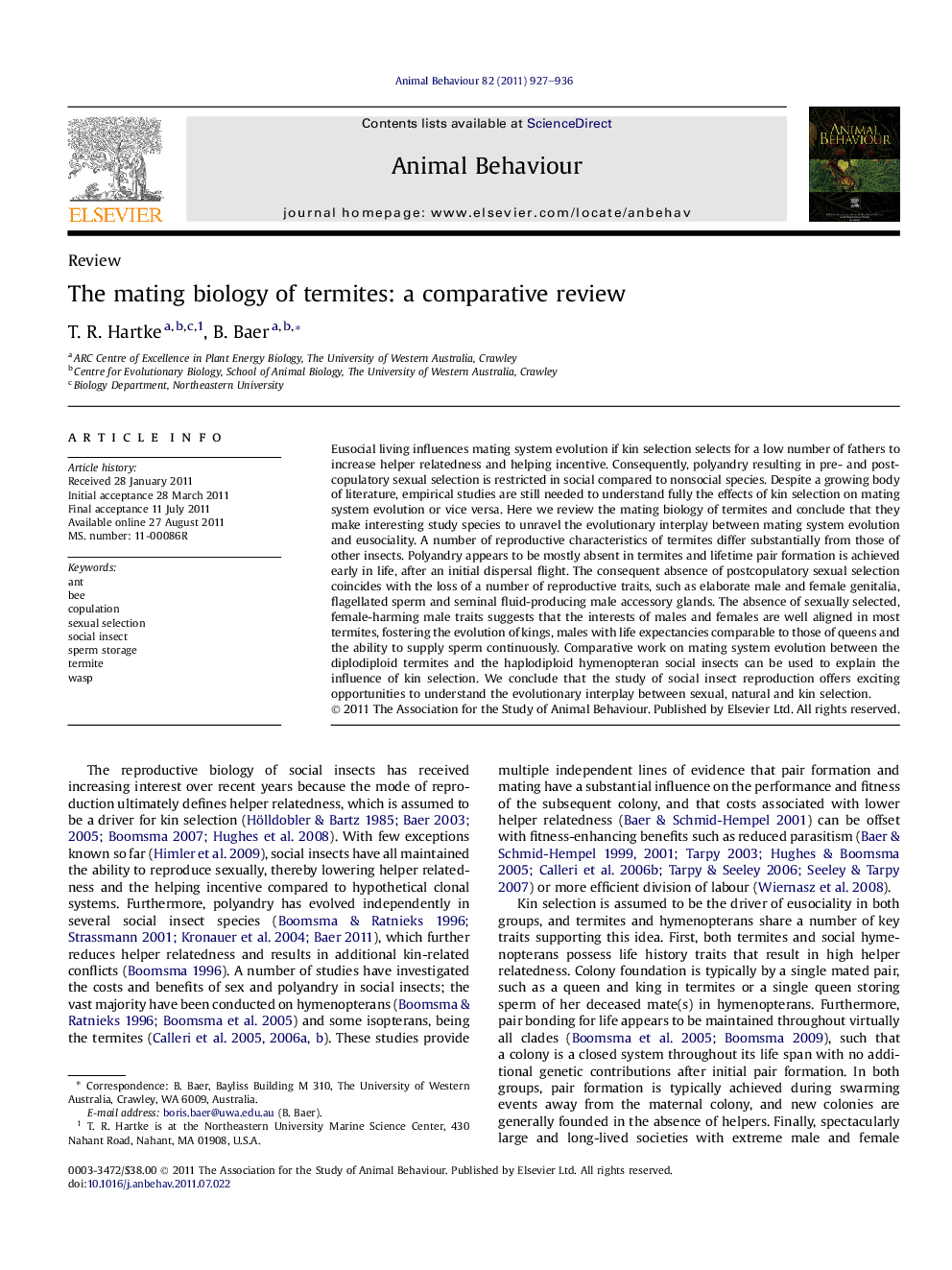| Article ID | Journal | Published Year | Pages | File Type |
|---|---|---|---|---|
| 2416913 | Animal Behaviour | 2011 | 10 Pages |
Eusocial living influences mating system evolution if kin selection selects for a low number of fathers to increase helper relatedness and helping incentive. Consequently, polyandry resulting in pre- and postcopulatory sexual selection is restricted in social compared to nonsocial species. Despite a growing body of literature, empirical studies are still needed to understand fully the effects of kin selection on mating system evolution or vice versa. Here we review the mating biology of termites and conclude that they make interesting study species to unravel the evolutionary interplay between mating system evolution and eusociality. A number of reproductive characteristics of termites differ substantially from those of other insects. Polyandry appears to be mostly absent in termites and lifetime pair formation is achieved early in life, after an initial dispersal flight. The consequent absence of postcopulatory sexual selection coincides with the loss of a number of reproductive traits, such as elaborate male and female genitalia, flagellated sperm and seminal fluid-producing male accessory glands. The absence of sexually selected, female-harming male traits suggests that the interests of males and females are well aligned in most termites, fostering the evolution of kings, males with life expectancies comparable to those of queens and the ability to supply sperm continuously. Comparative work on mating system evolution between the diplodiploid termites and the haplodiploid hymenopteran social insects can be used to explain the influence of kin selection. We conclude that the study of social insect reproduction offers exciting opportunities to understand the evolutionary interplay between sexual, natural and kin selection.
► We compare mating biology of termites with that of Hymenoptera. ► Termites have evolved reproductive traits that are otherwise rare in animals. ► Sexual selection seems not a major evolutionary force in many termites. ► Termites allow us to study effects of natural selection on reproductive traits.
